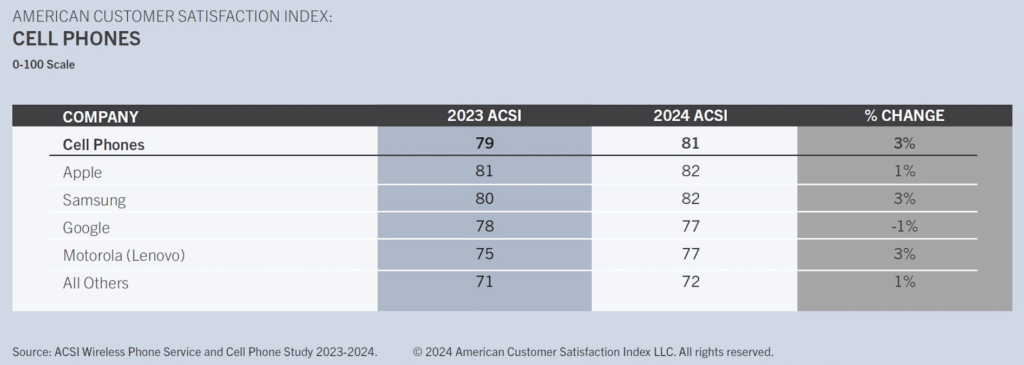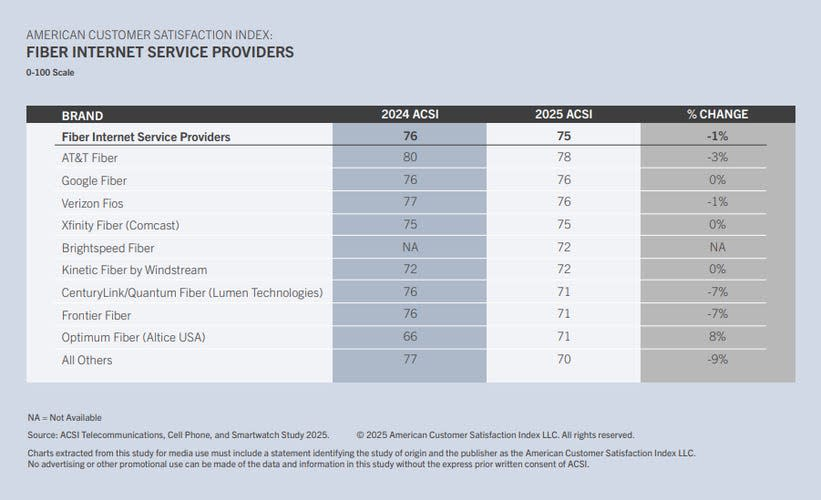Mobile satisfaction in the United States drops to its lowest point in a decade, according to the latest American Customer Satisfaction Index (ACSI) survey. The score falls to 78 out of 100, marking a sharp reversal after reaching an all-time high in 2024. This decline reveals that, despite new features, many users feel their phones fall short on basics such as battery life and call reliability.
What’s Happening & Why This Matters

Forrest Morgeson, associate professor of marketing at Michigan State University and Director of Research Emeritus at the ACSI, says, “Brands keep racing to add new capabilities, yet customers still judge smartphones by the fundamentals.” He explains that improvements in battery life, call quality, and usability matter most for lasting satisfaction.
Tim Bajarin, president of Creative Strategies, confirms that battery performance remains the top complaint among users. Call reliability issues, such as dropped calls and interrupted social media sessions, also frustrate many.
Bryan Cohen, CEO of Opn Communication, shares a common scenario: “My 72-year-old father was excited about the new iPhone 16 because of its AI features. But he struggles with its complexity and gets annoyed.”
Impact on Manufacturers and Technology
The dip in satisfaction also affects the major players. The survey, based on over 27,000 responses, shows both Apple and Samsung slipping one point to 81. Samsung maintains a slight lead in the 5G phone category. Google and Motorola trail at 75, dropping three points.

Satisfaction gaps widen between 5G and older phones. While 5G phones scored 80 (down two points), legacy device scores fall sharply to 68, a seven-point drop. John Strand from Strand Consulting explains, “Older phones may not perform well on all spectrum bands, unlike new devices with advanced chipsets.”
Cohen notes a technology gap, stating that many users are unaware their phone may not support 5G or newer features like eSIM. “People expect automatic upgrades that don’t happen,” he adds.
Internet Service Providers’ Mixed Reviews
The survey finds minor improvements for internet service providers (ISPs). Overall satisfaction nudges up to 72. Fiber providers slip slightly to 75, while non-fiber providers gain three points, reaching 70.
Creative Strategies’ Bajarin attributes the gains to new technologies improving signal quality and network stability. Among fiber ISPs, AT&T Fiber leads with a score of 78, followed by Google Fiber and Verizon FiOS at 76, and Xfinity Fiber at 75.

Optimum posts an impressive eight-point jump to 71, mainly due to better customer service. Smaller fiber providers face challenges, dropping nine points to 70, with declines in service quality.
On the non-fiber side, T-Mobile ties AT&T at 78. Verizon gains four points to 77. Kinetic by Windstream shows substantial improvement, surging 11 points to 62, driven by service quality enhancements.
Wireless Service Satisfaction Declines
Wireless phone service ratings fall by one point to 75. Subcategories like value Mobile Virtual Network Operators (MVNOs) and full-service MVNOs see drops. T-Mobile falls one point to 76, AT&T drops five points to 74, while UScellular loses three points to 72. Only Verizon posts a small gain to 75.
The survey evaluates network capability and call quality. AT&T shows the largest declines, with call quality dropping six points and network capability eight points, reflecting ongoing challenges.

A Bright Spot: Smartwatches
For the first time, the ACSI includes smartwatches in the survey. Samsung leads with an 83 score, followed by the Apple Watch at 80, and Fitbit at 72.
TF Summary: What’s Next
Mobile satisfaction in the U.S. declines sharply, showing that users prioritize battery life, call reliability, and ease of use over flashy features. Older phones without 5G support face growing dissatisfaction. ISPs show mixed results, with some fiber providers improving customer service.
Wireless service providers confront pressure to improve network quality and reliability. The inclusion of smartwatches in the satisfaction survey underscores growing consumer interest in wearable devices. Companies must focus on core experiences to regain trust.
— Text-to-Speech (TTS) provided by gspeech


